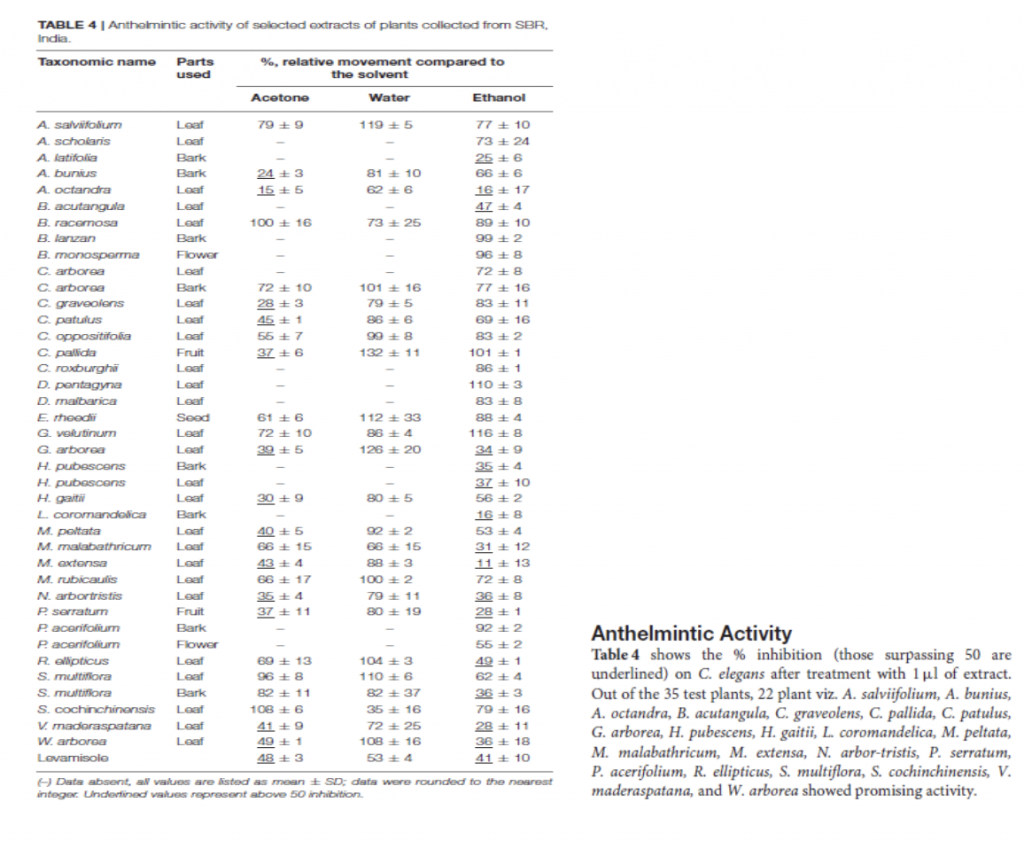
It has been estimated that less than 1–10% of plant species of the world have been studied chemically and pharmacologically for their potential medicinal value Plants species of tropical forests produce more chemical compounds for defense against pathogens and herbivores, thus helping their survival. For these reasons, many tropical plant species contain secondary metabolites with potential medical utility. The objective of the present paper is therefore to evaluate the antiviral, antibacterial, antifungal, and anthelmintic activities of medicinal plants used for treating infections by the tribes of the SBR (Mayurbhanj) in a systematic and consistent manner. The results can provide more scientific evidence supporting the clinical application of these plants, and can serve as a starting point for drug discovery.
Materials And Methods:
The anthelmintic assay was carried out in a 96-well flat-bottom microplate. Synchronized C. elegans (15μL, ∼45 L4 larvae) were added to each well of a 96-well microplate containing 184μL of E. coli OP50 culture (OD = 0.5 at 620 nm). Subsequently, 1μL of plant extract was added to each well; DMSO (1μL) was used in a separate well as a solvent control. After mixing, the 96- well microplate was placed into a WMicroTracker apparatus and incubated for 16 h at 20◦C. The movement of worms in each well was measured every 30 minutes and recorded by the WMicroTracker. The percentage of the average movement over 16 h of test samples with extract compared to the DMSO control, was used to estimate the relative anthelmintic activity. Levamisole (final concentration 50μM) was systematically used as a positive control.
Results:
C. elegans is a model organism used for drug discovery. Therefore, it has been selected in this work for the evaluation of active extracts with anthelmintic effect. In the present study, of the 83 plant extracts tested, 30 had pronounced anthelmintic activity (>50% activity inhibition). More than half of the extracts show some activity (defined arbitrarily as activity inhibition by more than 25%). This suggests the accuracy of the use of plants by the tribes of the SBR. The plant extracts that inhibited the activity of C. elegans can be promising starting points in the search for anthelmintic drugs.

| Front Pharmacol. 2017 Oct 23;8:658. doi: 10.3389/fphar.2017.00658 Panda SK, Padhi L, Leyssen P, Liu M, Neyts J, Luyten W. |
